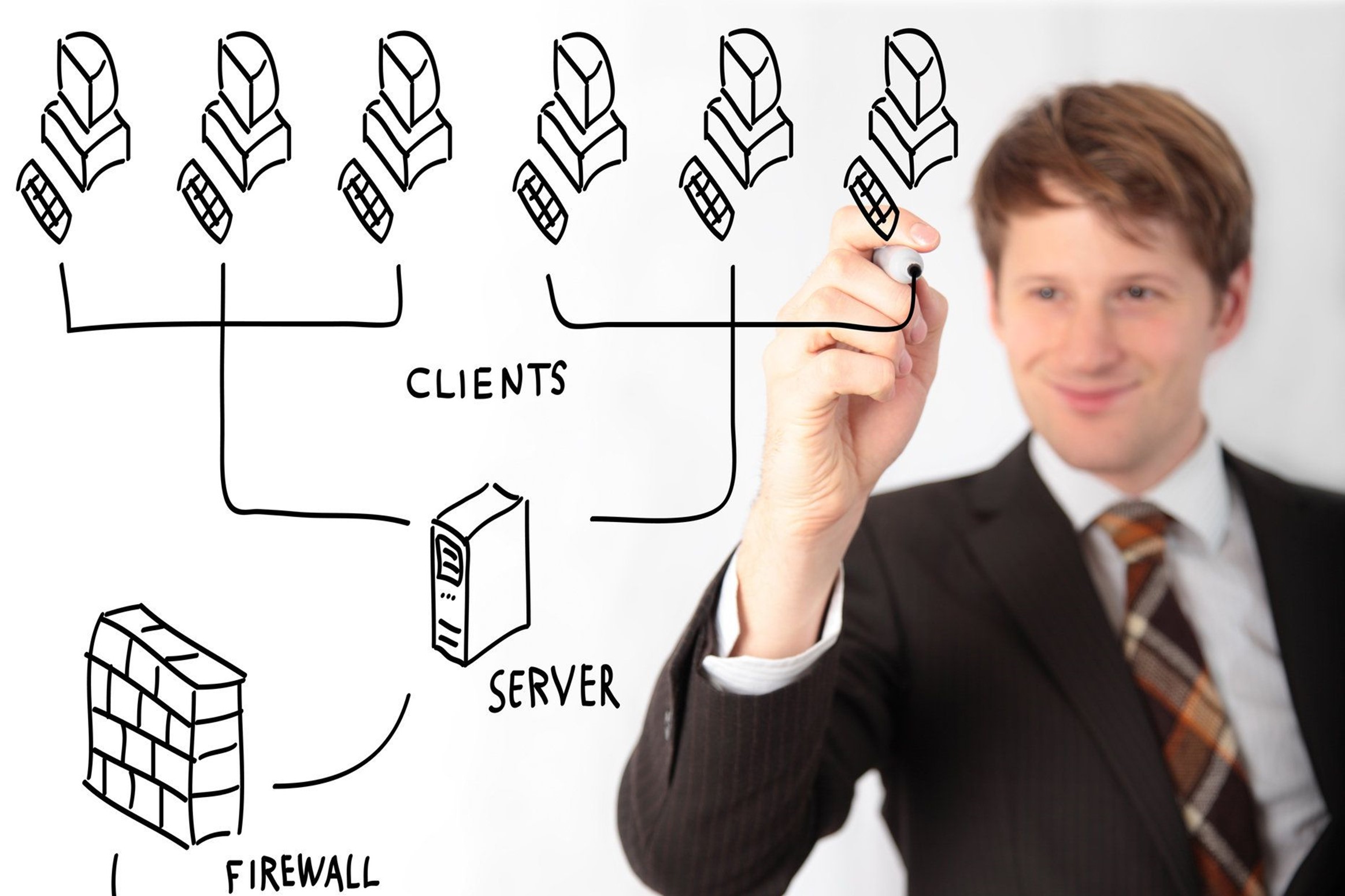
In the early days of computer automation of accounting, much of the accounting software was developed and written internally by the organization’s IT staff. Today, companies more frequently purchase software rather than develop it internally. Purchased software has a lower cost, shorter implementation time, and fewer bugs. These modern, integrated systems usually run in one of two types of computer architectures. One model is a client–server model, and the other is cloud computing. The choice has a tremendous impact on the software that is chosen, the cost of the IT system and software, and risks and controls.
Since the mid-to-late 1980s, the client–server model of networks has been commonly used. Client computers, usually PC-type computers, are networked to the server and work with the server in such a way that the network appears to be one integrated system. The advantage of client– server computing is that the PC clients perform some share of the processing tasks.
A manager in Milwaukee, Wisconsin may have a feeling that there is an extremely high number of uncollectible accounts in certain parts of Milwaukee. The large database of customers and their receivables balances would reside on the server. The regional manager would use her client PC to write a query to extract the overdue customer accounts in Milwaukee from the servers.
In client–server computing, tasks are assigned to either the server or the client on the basis of which one can handle each task most efficiently. The server is more efficient in managing large databases, extracting data from databases, and running transaction processing software applications. A large number of client– server applications are now moving toward a Web-based model. This model of IT is described in the next section.
Auto272